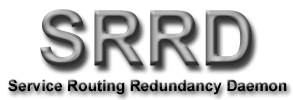|
DataCore GmbH
Software and Networking Solutions
Your step into the digital world of the 21th century
|
|
DataCore GmbH
Software and Networking Solutions
Your step into the digital world of the 21th century
|
DarkChannel is a open and free, crypto agnostic, secure, modern relay chat protocol.
It's 2016 - 3 years after Snowden - and many peoples still use old, insecure chat protocols from the 1990's. This has many reasons which may be debated. One of those reasons is that modern chat tools tend to be clumsy and one-to-one Messenger type of tools, mostly usable on mobile devices. Some of them provide group communication but - let's put it this way - most of those suffer from other problems, which we don't want to elaborate on.
DarkChannel tries to specify a modern, secure and trustworthy IRC-style protocol based on known secure building blocks without reinventing the wheel or trying to implement a new cryptographic system.
The DarkChannel protocol specification tries not depend on a specific cryptographic system. Current reference implementations are using GnuPG as the underlaying cryptographic system, but any cryptographic system providing the needed properties could be used instead - at least that's the theory.
For more information check out the projects homepage at https://darkchannel.ch

UAVP-NG stands for The Next Generation Universal Aerial Video Platform. It is an effort by a group of enthusiasts to create an Open Source autonomous UAV for fun flying, photography and experimentation.
To reach the project's goal a special UAV Operating System called NGOS, the NG Operating System, was developed under a GPLv3 license.
The NGOS allows near-realtime closed-loop control of a Quadcopter's attitude and altitude stabilization while using the remaining processor time for a non-preemtive task scheduler doing fair round-robin of cooperative non-realtime tasks.
It uses a modular, plugable extension framework for closed-loop control algorithms, called Controllers, and allows for several of them implemented at the same time using a simple abstract programming interface. This allows simple extensions of the system's closed-loop control algorithms by peoples not used to firmware and system programming.
The system allows multiple shells and their spawned commands to be used concurrently on the different physical I/O devices. The shell command interface is also very modular and allows developers the fast addition of new commands for debugging and testing purposes. Controllers and Configurations can be manipulated online using one of the several shells.
The above is tightly coupled with a behavior system which allows the user to configure arbitrary behavior rules using simple behavior conditions and behavior actions using on of the shells.
For more information check out the projects homepage at http://ng.uavp.ch

SRRD implements a fully featured Cluster Server based soley on the OSPF routing protocol.
SRRD is using a new OSPF feature named OSPF Opaque Link State Announcements as proposed in RFC 2370. These Opaque Link State Announcements allow to flood arbitrary data through an OSPF routing domain.
SRRD is fully configurable over the web and supports SSL and PKI client and server authentication. It implements cluster server features like Service Groups, Service Dependencies as well as Critical Services.
The participating cluster nodes may reside on different networks (LANs) accross the whole OSPF routing domain allowing fast failover between distant cluster nodes.
PBRD stands for Path Based Routing Daemon. It's a routing daemon working in conjunction with Netfilter and COBRA - The Component Based Routing Architecture.
PBRD implements a signaling protocol in the form of a path based routing daemon running under Linux 2.4 with the help of the Netfilter and COBRA framework and the IPRoute2 architecture. A simple but fully functional command line client allows for the configuration, the maintenance as well the loading, configuration and combination of plug-in along those paths.
The modular implementation of the path based routing daemon allows for a fast port of the signaling protocol to other node architectures. The modularity of the existing Netfilter and COBRA framework allowed a permitted merger of both frameworks.

COBRA stands for Component Based Routing Architecture. It's a Linux Kernel extension for Active Networking implementing the dynamic loading of any number of active network plug-ins into the operating system kernel.
In the future, Active Networks will allow users requirements to be reprogrammed such that new network services can be implemented rapidly and efficiently. The Active Network Node Architecture provides a framework which allows code plugins to be dynamically loaded and linked to the kernel code at runtime.
Network nodes can therefore be extended with a new functionality in a flexible way. For example, the user can install encryption and decryption plug-ins in a network for the encryption of data transfers. Using this new framework, the network user can install plug-ins in the routers such that individual or aggregate flows, can be processed according to pertinent needs.
Linux with its Netfilter architecture provides an elegant possibility for extending the operating system kernel during runtime with any number of network functionality.